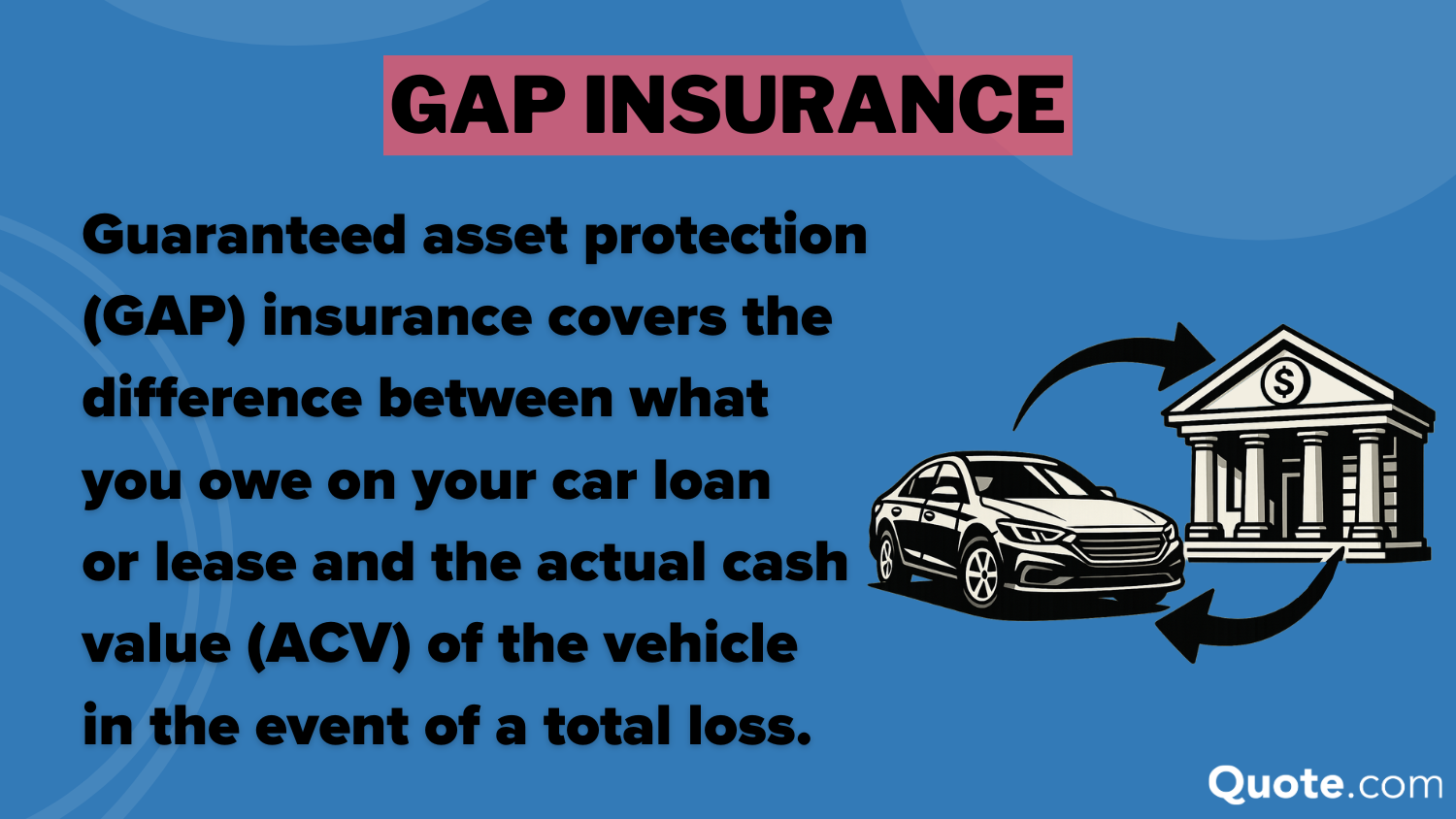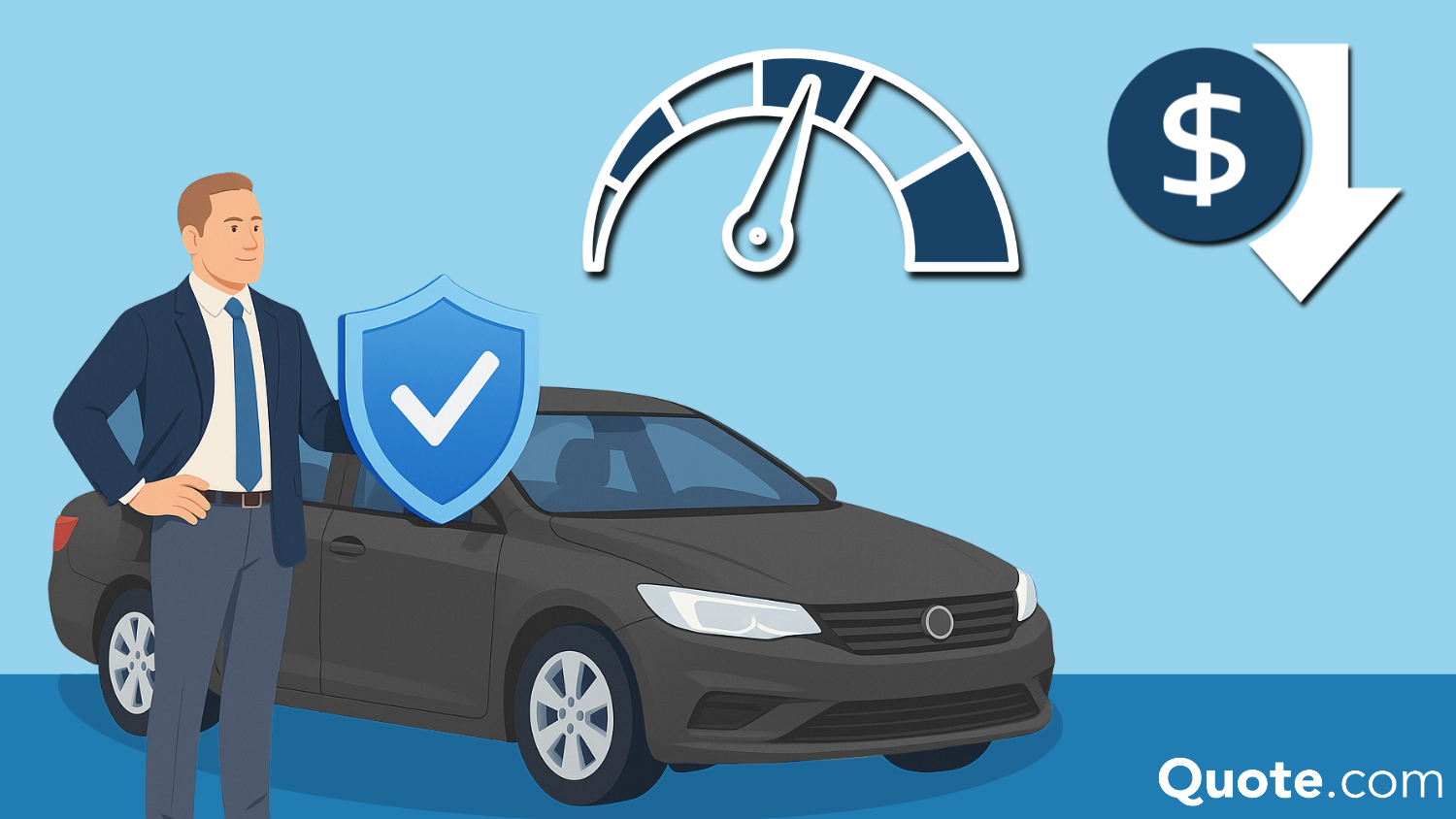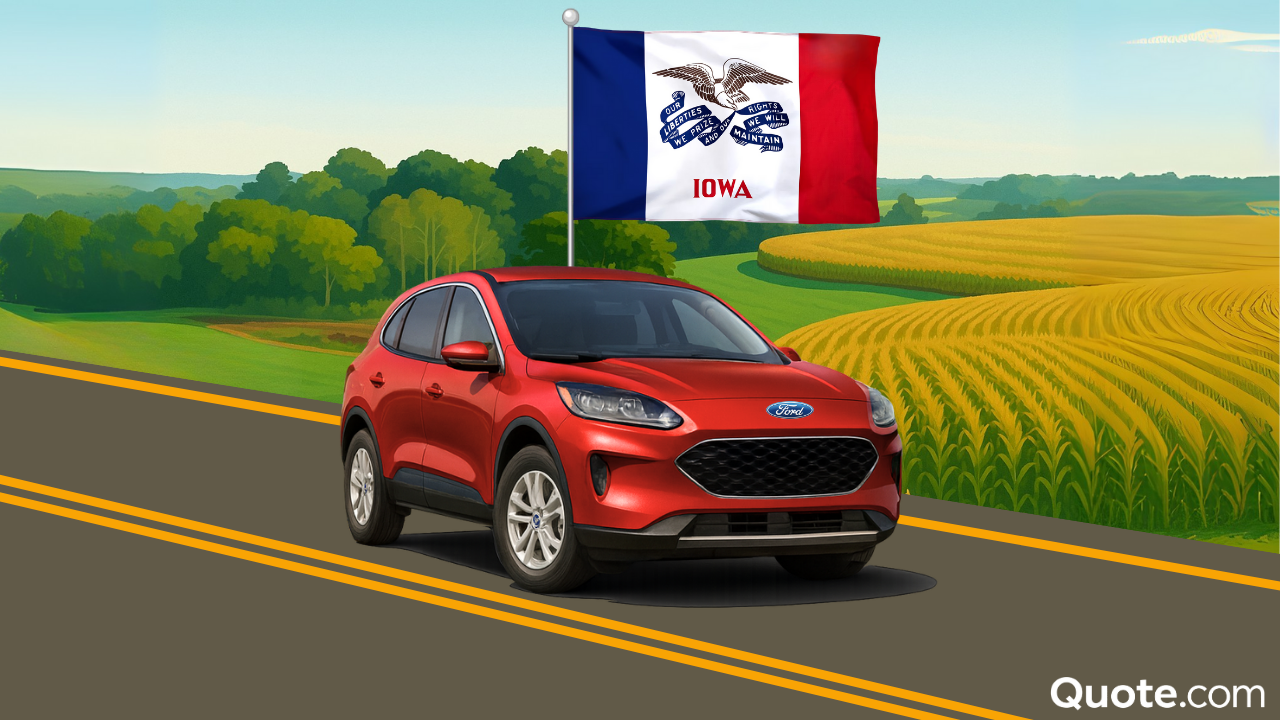Seat Belt Use in the U.S. (2025 Report)
Seat belt use isn’t the same for everyone. Discover how age, gender, and vehicle choice shape America’s buckling-up behaviors.
Secured with SHA-256 Encryption




Table of Contents
Table of Contents


Insurance and Finance Writer
Luke Williams is a finance, insurance, real estate, and home improvement expert based in Philadelphia, Pennsylvania, specializing in writing and researching for consumers. He studied finance, economics, and communications at Pennsylvania State University and graduated with a degree in Corporate Communications. His insurance and finance writing has been featured on Spoxor, The Good Men Project...
Luke Williams


Senior Director of Content
Sara Routhier, Senior Director of Content, has professional experience as an educator, SEO specialist, and content marketer. She has over 10 years of experience in the insurance industry. As a researcher, data nerd, writer, and editor, she strives to curate educational, enlightening articles that provide you with the must-know facts and best-kept secrets within the overwhelming world of insurance....
Sara Routhier


Licensed Insurance Agent
Kristen is a licensed insurance agent working in the greater Boston area. She has over 20 years of experience counseling individuals and businesses on which insurance policies best fit their needs and budgets. She knows everyone has their own unique needs and circumstances, and she is passionate about counseling others on which policy is right for them. Licensed in Massachusetts, New Hampshir...
Kristen Gryglik
Updated November 2025
Automotive safety technology has changed rapidly in recent years, with new and impressive features altering our expectations of protection on the road. From advanced safety system features such as blind spot detection to new autonomous driving capabilities, a range of guards against human error may be making us safer drivers – or at least defending us from those who aren’t.
However, the most powerful car safety device at our disposal may be so humble that we often overlook it: the seat belt.
According to the Centers for Disease Control and Prevention (CDC), seat belts cut crash-related injuries and deaths by roughly half, saving about 15,000 lives a year. Simple and effective, seat belts prompt only one question: Why do some of us fail to use them?
In this project, we surveyed 1,000 Americans of various demographics to learn how consistently they buckled up, and which groups still resisted the seat belt’s safety appeal. Our findings reveal that seat belt usage varies significantly, leaving many drivers vulnerable to deadly outcomes in a crash.
Read on to learn how your seat belt habits compare to those of other drivers on the road.
Buckling Up, by Generation

To analyze the seat belt habits of Americans by age group, we split our respondents into three generations by birth year:
- Baby Boomers: Born 1946–1964
- Generation X: Born 1965–1980
- Millennials: Born 1981–1996
Our results reveal an encouraging trend: The majority of every generation buckled up every time, no matter where they sat in the car.
Seat belt use was particularly strong in the driver’s seat, where more than four in five members of every generation always used a seat belt. The front passenger seat saw slightly lower numbers, although an overwhelming majority still used a seat belt on every occasion.
In these front seats, Gen Xers were most consistent, followed closely by baby boomers and millennials. While recently licensed teenage drivers have notoriously low rates of seat belt use, it seems we’re still relatively insensitive about safety in our 20s.
But in the back seats, more troubling findings emerged. Only slightly more than half of Gen Xers and millennials buckled up whenever riding in the back, and baby boomers did so just 64 percent of the time.
Perhaps these results relate to recent research on backseat safety habits, which found that people are less likely to use seat belts in hired cars, such as taxis or ride-sharing vehicles. However, no matter who’s driving, rear passengers without a seat belt are at risk of sustaining injuries as well, especially if they’re thrown from the car as human projectiles.
Free Auto Insurance Comparison
Compare Quotes From Top Companies and Save
Secured with SHA-256 Encryption
Buckling Up, by Gender
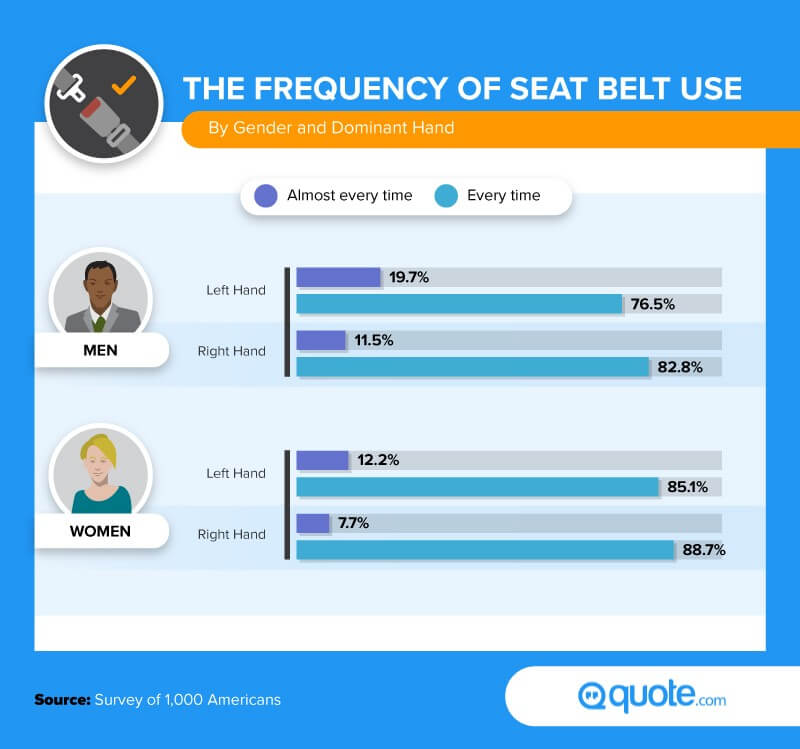
When it came to comparing genders, women were more likely than men to buckle up every time.
Perhaps that’s one reason insurers’ secretive pricing algorithms tend to generate higher premiums for men. While this finding may not surprise those who believe men are more reckless in all matters automotive, we also found that right-handed individuals had a better record of seat belt use than their left-handed counterparts. This held true for both men and women, which leads us to wonder why this is the case.
Perhaps car manufacturers cater to the majority when designing their vehicle interiors, making the experience of putting on your seat belt more uncomfortable for left-handed drivers and passengers. Or maybe lefties find driving one-handed more difficult because the seat belt crosses over their dominant shoulder.
Whatever the reason, minor discomfort is certainly worth the added protection a seat belt provides.
The Geography of Seat Belt Safety
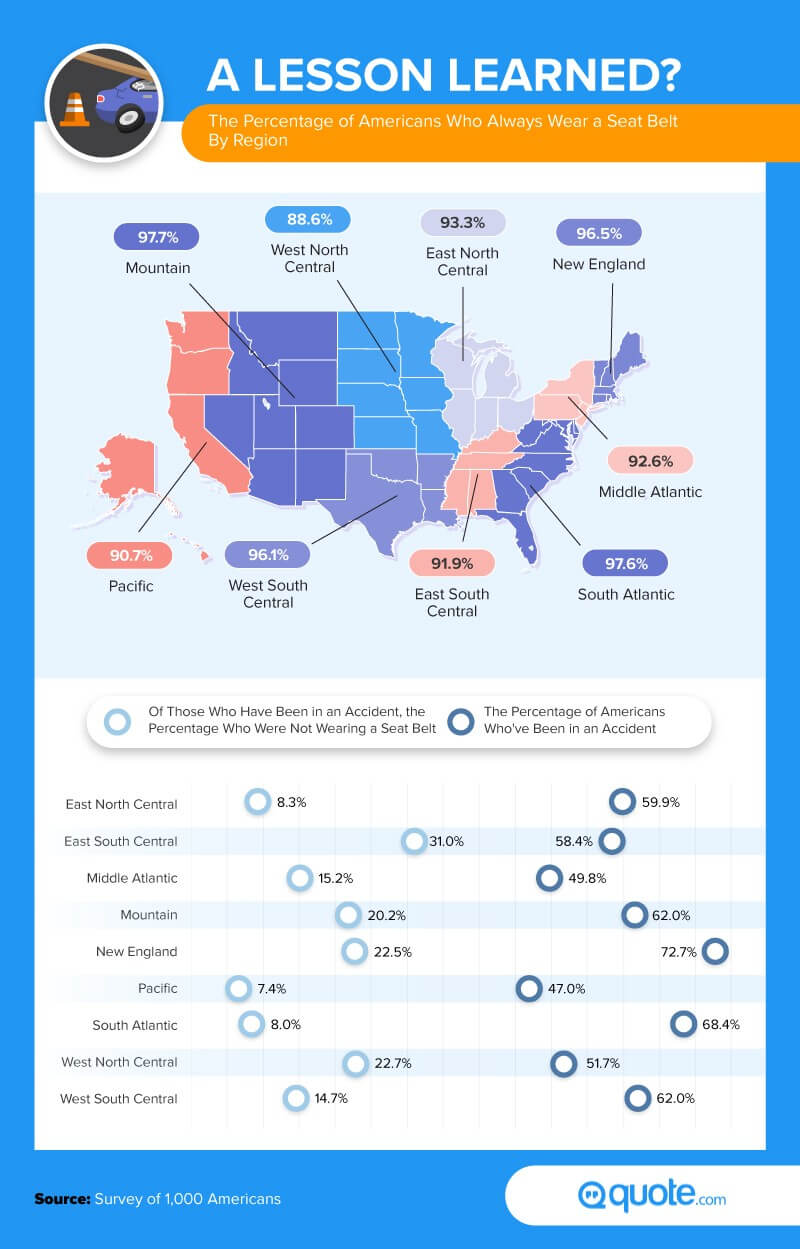
Geographically speaking, much of the country boasted excellent rates of seat belt use among drivers.
In the South Atlantic, Mountain, West South Central, and New England regions, more than 96 percent of drivers always buckle up when behind the wheel. However, there were also some regions with relatively low rates of seat belt use, such as the West North Central areas.
Turning to our participants’ accident histories, we examined the percentage of drivers in each region who had been involved in an accident and the proportion of those who were not wearing seat belts at the time.
While New England and the South Atlantic regions were most accident-prone overall, the East South Central region had the highest percentage of those involved in an accident when not wearing a seat belt. Many states in that region, such as Alabama, have significant rural populations in which the CDC has identified low rates of seat belt use.
Seat Belt Use, by Make
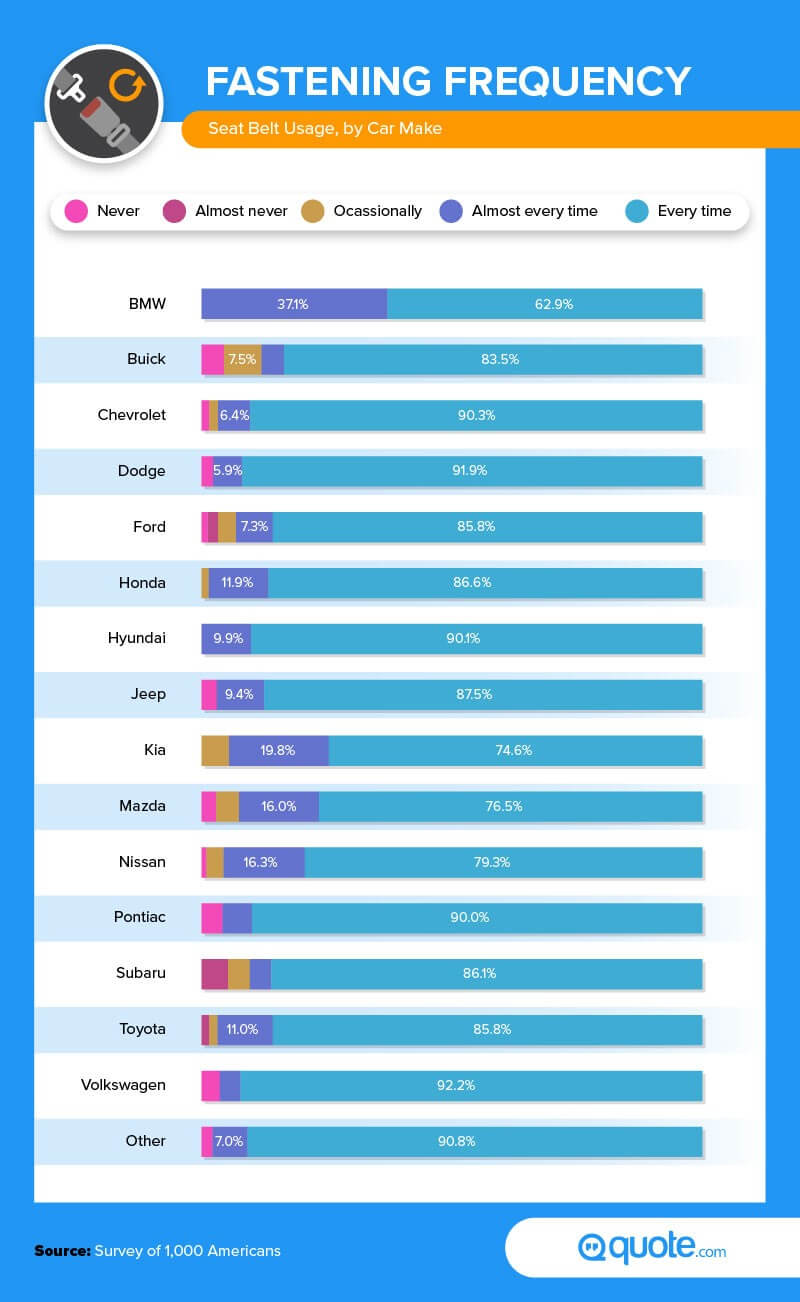
Our data also presented significant disparities in seat belt tendencies among drivers of different kinds of cars.
While at least three-quarters of all the other manufacturers’ customers buckled up every time, some of Asia’s most powerful automotive brands saw relatively low figures. Fewer than 80% of Kia, Mazda, and Nissan drivers always use a seat belt.
Owners of American-made vehicles had commendable rates of buckling up every time, however, with roughly 9 in 10 Chevy, Dodge, and Pontiac owners doing so. But the brand with the most seat belt-conscious drivers was Volkswagen, boasting a 92 percent record for buckling up every time.
The manufacturer may be responding to its safety-oriented audience of late, earning the IIHS Top Safety pick designation for its 2018 Volkswagen Atlas.
Free Auto Insurance Comparison
Compare Quotes From Top Companies and Save
Secured with SHA-256 Encryption
Click It or Ticket?
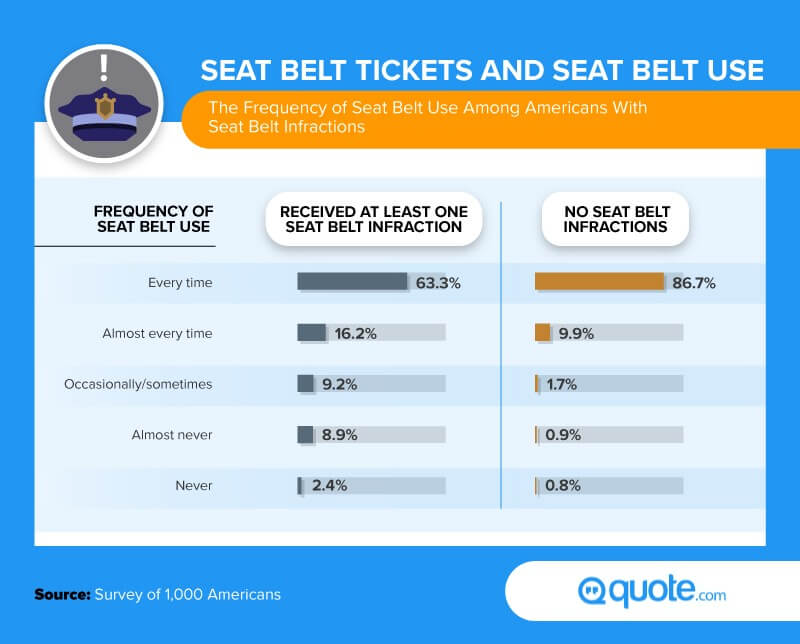
Unfortunately, law enforcement action doesn’t seem to be particularly persuasive in convincing drivers to use seat belts more often.
Among those who had been ticketed for failing to wear a seat belt before, the percentage of those who always buckled up was still dramatically lower than the group that had never been cited. The percentage of those who never or almost never wore a seat belt was also higher among the ticketed group, suggesting some drivers’ habits are impervious to regulation.
Perhaps the penalties applied to first-time seat belt offenders aren’t large enough to serve as an effective deterrent. According to the National Highway Traffic Safety Administration (NHTSA), fines range from $25 to $200.
As many people advocate for harsher penalties for other dangerous road behaviors, such as distracted driving involving smartphone use, it is possible that greater fines for seat belt infractions will also be considered in the future.
Unsafe Excuses
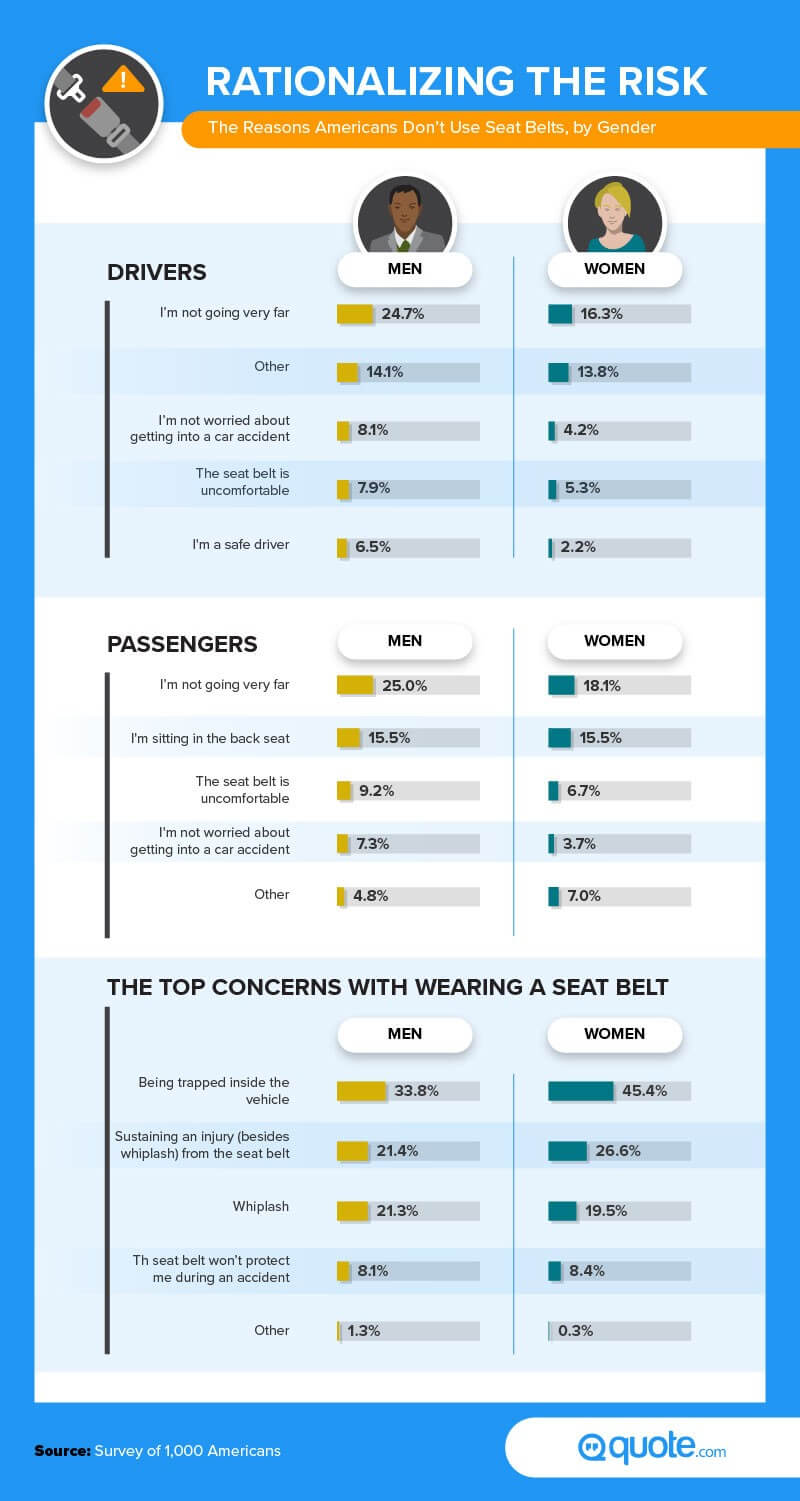
To better understand why drivers went without seat belts, we asked respondents about their motives for not buckling up. For both genders, as either a passenger or driver, the primary justification was the short length of their intended trip.
This response at least implies that participants understand the safety value of the seat belt, even if they’re mistaken about the minimal risk associated with short trips. Fewer people cited seat belt discomfort, although roughly 15 percent of passengers did say they felt they could go unbuckled in the back seat.
While relatively few people feared seat belt were dangerous, more than a third of men and over 45% of women expressed concerns about being trapped in the event of an accident. Other common justifications included fear of whiplash or some other injury caused by the seat belt specifically.
The Price of Poor Protection
Our findings suggest the majority of American drivers are conscious of a seat belt’s life-saving potential and use them accordingly. However, a relatively small pool of drivers continues to risk injury and death by ignoring this simple precaution, despite the well-established benefits of buckling up.
If you’re among this group of seat belt skeptics, we hope our results encourage you to reconsider. And if you already wear a seat belt whenever you drive, keep up the habit in all circumstances.
Another essential aspect of protecting yourself on the road is great insurance, although finding the right coverage can seem a lot more complicated than remembering to strap yourself in. That’s why Quote.com is here to help, guiding you to the insurance you need for the lowest price possible. Our no-cost quotes can save customers $500 or more on their annual premiums – keeping your wallet safe as well.
Free Auto Insurance Comparison
Compare Quotes From Top Companies and Save
Secured with SHA-256 Encryption
Methodology
We surveyed 1,000 Americans using Amazon’s Mechanical Turk service. All results are weighted to be representative of the U.S. population based on age and gender.
Fair Use Statement
Feeling driven to share these results? Go for it, as long as it’s for noncommercial purposes and you link back to this page and the author.
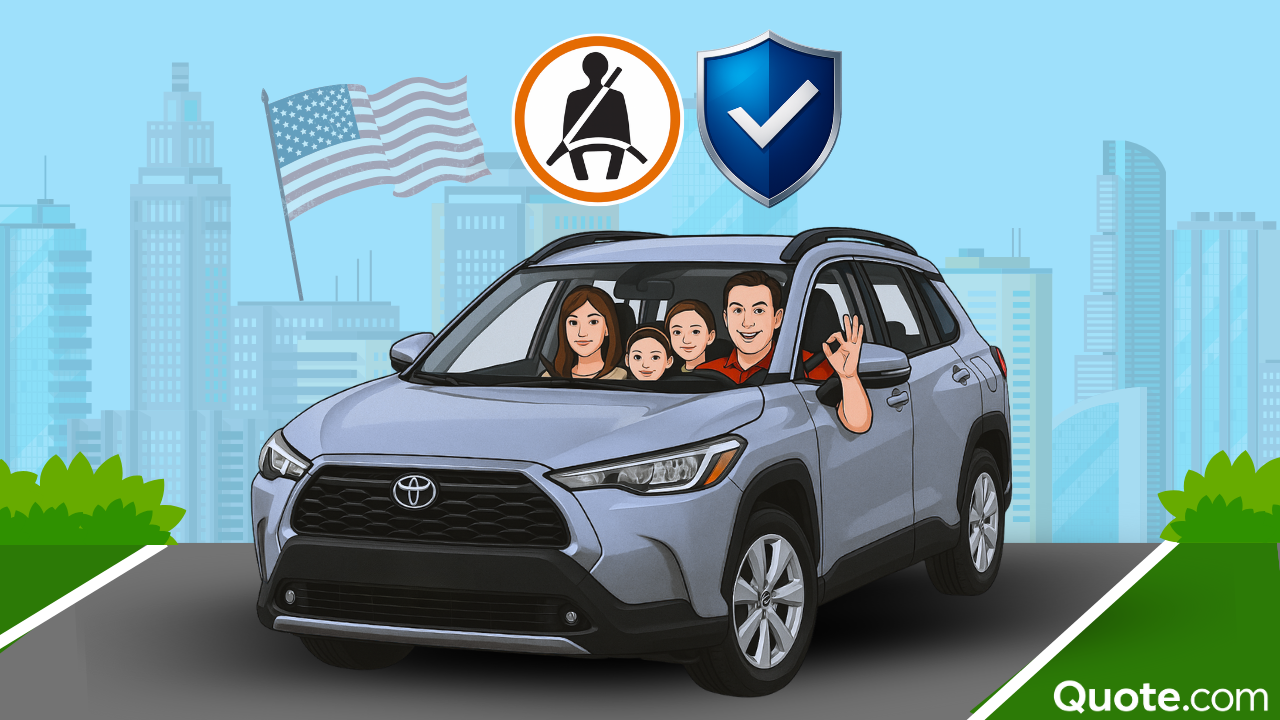
Frequently Asked Questions
What percentage of Americans wear seat belts?
In 2023, about 91.9% of adult front‑seat occupants wore a seat belts. For 2024, the rate remained high at 91.2%.
When is a seat belts most effective?
Seat belts are most effective in crashes. They reduce the risk of a fatal injury by nearly 45% and moderate‑to‑critical injury by nearly 50% for front‑seat car occupants. In pickups, the effect is even stronger, with a nearly 60% reduction in fatal injuries.
Are drivers responsible for passengers buckling up?
This depends on state law. In many states, drivers can be held liable if their passengers fail to buckle up; in others, passengers themselves are responsible.
Are seat belts designed for men?
Historically, yes. Seat belts and crash-test design primarily used male body standards. Early models were based on the “average American man”.
What is the top excuse for not wearing a seat belt?
The most frequently cited reason: “I forgot”. Another common excuse is “only going a short distance”, though that’s especially dangerous, as most fatal crashes occur nearby.
What is the seat belt compliance rate in Texas?
Current data suggests over 90% compliance among Texans.
Get a FREE Quote in Minutes
Insurance rates change constantly — we help you stay ahead by making it easy to compare top options and save.

